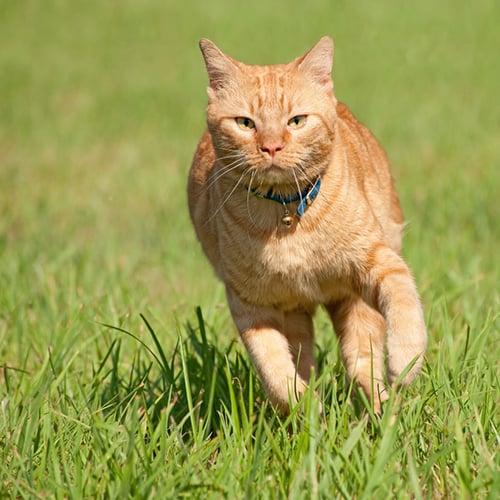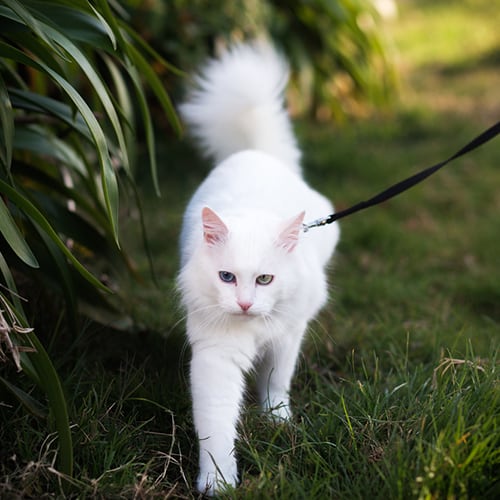We can all agree that our cats have us trained, but did you know it IS possible to train your cat? There are lots of people who don’t believe cats can be trained, but that’s simply not true. In fact, cats are actually eager to learn if you’re willing to take the time to train them in a way they understand.

What Motivates Your Cat?
The first step in training your cat is to identify what motivates them. That will become a reward. In most cases, this is food. For other cats, it may be a favorite cat toy or style of playing (like with a wand toy). Other cats may want catnip as their reward.
Discover what most motivates your cat before training.

Remember that punishing your cat is never acceptable. Cats do not respond to negative enforcement, nor do they understand it. In fact, negative reinforcement can lead to new behavior problems.
Invest in a clicker. Clicker training is the fastest way to train your cat. You might also want to invest in a book to learn how to use the clicker.
Train Your Cat to Come When Called

Having a cat that is trained to come when called is really helpful under many circumstances. Train your cat to come by making a distinct noise that your cat can recognize as being you. When your cat comes to you, that’s when you reward him. If you’re using a clicker, click it, then feed him. You should practice this at least twice a day, gradually increasing the distance between you and your cat each day.
Train Your Cat to Shake Paws

You can easily train your cat to “shake your paw.” Place a high-value treat (a piece of fresh meat or his favorite treat) in the palm of your left hand and show your cat. Place your right hand, palm up, near your cat’s paw. Wait until the cat lifts his front paw to touch your hand, then immediately give him the treat.
Train your Cat to Walk on A Leash

Many cats enjoy walks – even if it’s just wandering the backyard while on a leash. Train your cat to walk on a leash very easily with a walking harness. Cat harnesses are specially designed to control a cat should he become nervous on a walk. These attach to the cat’s back rather than the neck, making it much safer for your pet.
Spend a few days getting your cat accustomed to wearing a harness. Start out having your cat wear the harness for a few minutes a day (inside) and slowly expand that time as your cat grows used to the pressure. Don’t attach a leash until your cat is completely comfortable wearing a harness.
Start slowly when you take your cat outdoors. It’s important they feel comfortable, but understand that they are not allowed outdoors on their own. They should never be allowed to rush a door. Begin in the backyard or an enclosed area for the first month or two. Your cats will need time to adjust to new sounds, sights, and smells.
Taking your cat for a walk (even if it’s only in the yard) and training your cat is a great way to help felines out with behavior problems. Cats are intelligent creatures and it’s time we started treating them that way.
Check out some of the many books available if you want to learn more about training your cat. You’d be amazed at just how much you can teach your cat to do!
Save this for later… Pin it!








